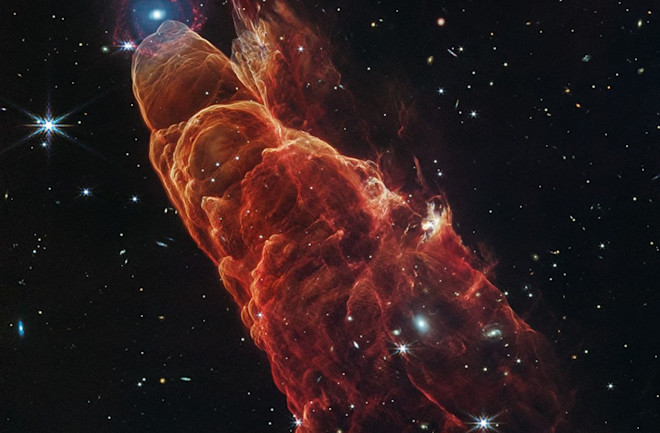
NASA’s James Webb Space Telescope observed Herbig-Haro 49/50, an outflow from a nearby still-forming star, in high-resolution near- and mid-infrared light. The intricate features of the outflow, represented in reddish-orange color, provide detailed clues about how young stars form and how their jet activity affects the environment around them. Like the wake of a speeding boat, the bow shocks in this image have an arc-like appearance as the fast-moving jet from the young star slams into the surrounding dust and gas. A chance alignment in this direction of the sky provides a beautiful juxtaposition of this nearby Herbig-Haro object with a more distant spiral galaxy in the background. Herbig-Haro 49/50 gives researchers insights into the early phases of the formation of low-mass stars similar to our own Sun. In this Webb image, blue represents light at 2.0-microns (F200W), cyan represents light at 3.3-microns (F335M), green is 4.4-microns (F444W), orange is 4.7-microns (F470N), and red is 7.7-microns (F770W). (Image Courtesy of NASA, ESA, CSA, STScI)
NASA’s James Webb Space Telescope (JWST) has caught yet another spectacle in a newly released image of a “cosmic tornado” forming billows of gas and dust that appear to be crowned with a spiral galaxy. This colorful display, known as Herbig-Haro 49/50, illustrates an outflow that was originally launched from a young star and is now zipping through space at breakneck speed.
The galaxy sitting at the summit of the colorful arc is really much more distant than it seems and entirely unrelated to the outflow. In a stroke of luck, however, the two features have aligned to create a satisfying image that is helping scientists understand the eccentricities of star formation.
Creation of the Cosmic Tornado

